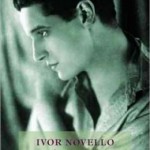Antiquity, Sexuality and Film Stardom
August 15, 2013
by Laurence Georgin
Southampton’s Dr Michael Williams has been working on film stardom, and its relationship to the myth and iconography of ancient Greece and Rome for over fifteen years. Sexuality has a consistent theme of his ongoing research and publications, which includes work on gay stars and directors, as well as sexuality in the heritage film.
 His interest began while researching the film career of the major British film star, composer and playwright, Ivor Novello for his book Ivor Novello: Screen Idol (BFI, 2003). In that study of ‘England’s Apollo’, the man who was arguably the first British film star to compete with Hollywood rivals such as Rudolph Valentino in the 1920s, Dr Williams explored how myth was used, in tandem with references to the Great War and Novello’s own homosexuality, to construct a modern idol who could connect to audiences through a strong relationship to the past.
His interest began while researching the film career of the major British film star, composer and playwright, Ivor Novello for his book Ivor Novello: Screen Idol (BFI, 2003). In that study of ‘England’s Apollo’, the man who was arguably the first British film star to compete with Hollywood rivals such as Rudolph Valentino in the 1920s, Dr Williams explored how myth was used, in tandem with references to the Great War and Novello’s own homosexuality, to construct a modern idol who could connect to audiences through a strong relationship to the past.
Michael expanded his research for the recent book Stardom, Myth and Sexuality: The Rise of Hollywood’s Gods (Palgrave, 2012), which investigated the use of antiquity in silent Hollywood stardom and its reception in Europe. Sexuality was particularly important topic here because of the way classicism could be used to communicate, but safely disguise, homosexuality to audiences. This can be seen in the publicity of stars such as Ramón Novarro, who was gay, as well as in the narratives of films such as Flesh and the Devil (1926), starring Greta Garbo.
Michael is currently writing a book, provisionally titled Film Stardom and the Ancient Past: Bodies, Landscape and Antiquity, which will bring his research up-to-date in exploring an ‘archaeology of stardom’ from 1930 to the present, and sexuality will again be a key theme.
Categories: film studies. Tags: gay cinema, Homosexuality and Sexuality.

